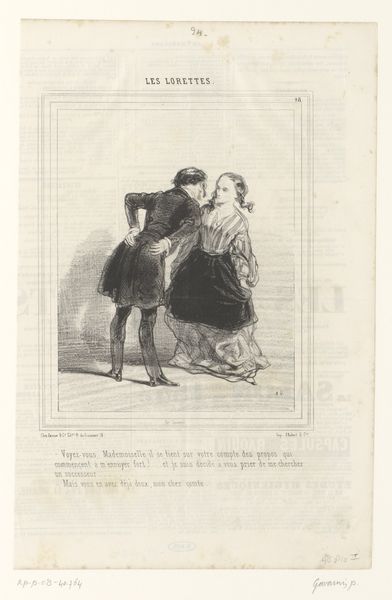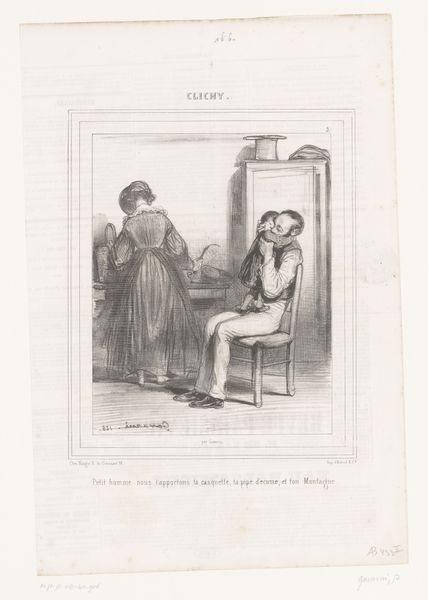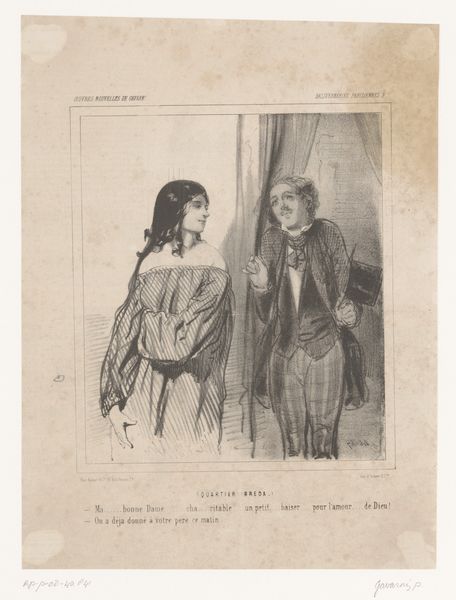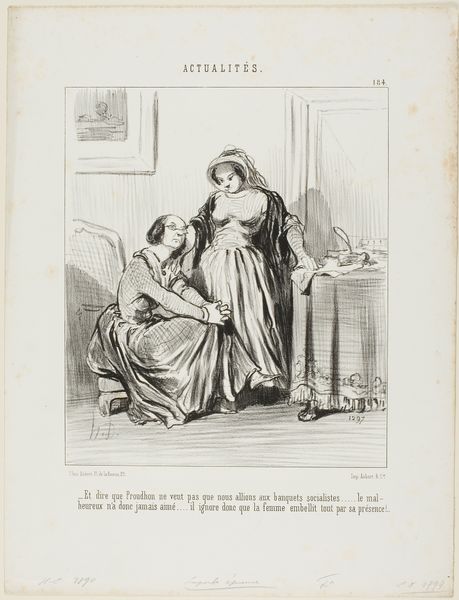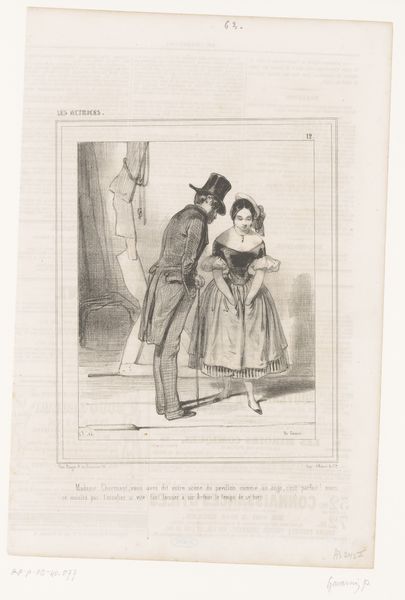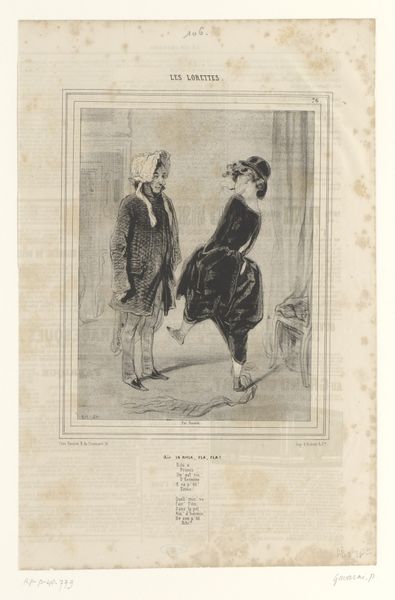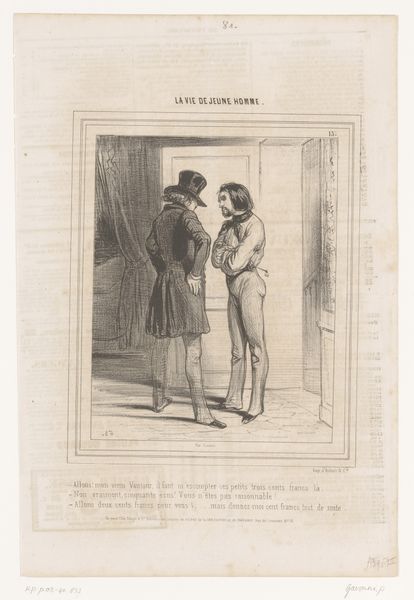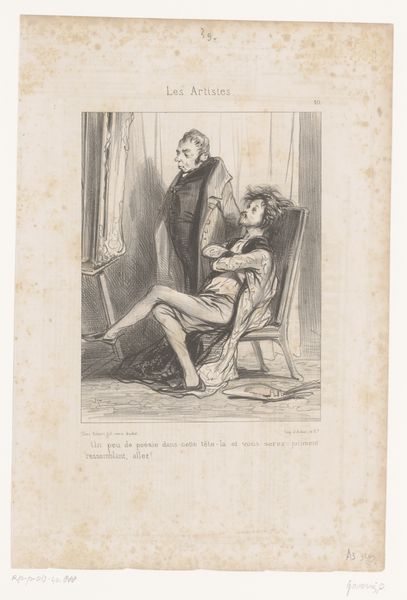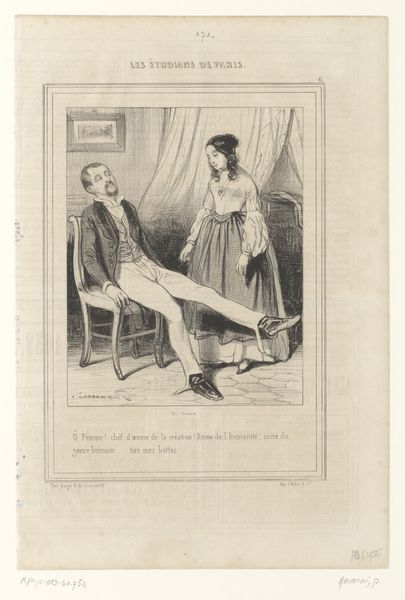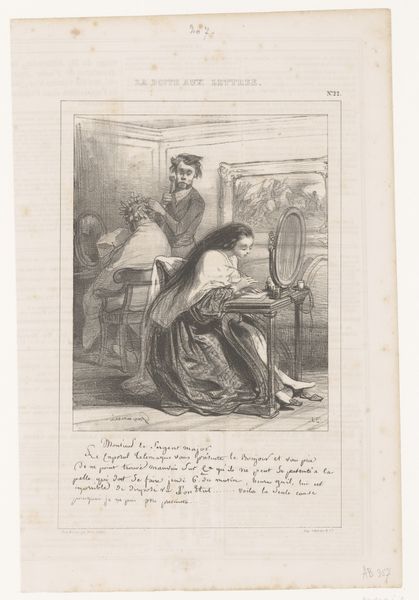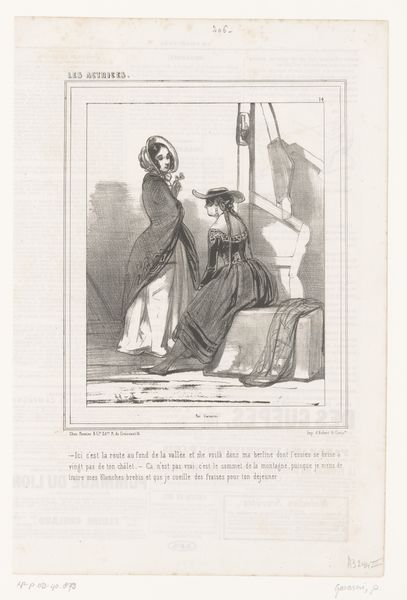
drawing, lithograph, print, pen
#
portrait
#
drawing
#
16_19th-century
#
lithograph
# print
#
figuration
#
pencil drawing
#
romanticism
#
pen
#
genre-painting
Dimensions: height 363 mm, width 244 mm
Copyright: Rijks Museum: Open Domain
Curator: We must consider the conditions of production for this lithograph, “Acteur nodigt actrice uit om te komen eten,” created by Paul Gavarni in 1843. Editor: That translates to "Actor Inviting Actress to Dinner," right? It feels theatrical. The lines are so precise, creating a sense of dramatic tension, and it seems like they are performing on a stage! How do we understand a work like this today? Curator: Let’s consider the economic realities. Lithography allowed for mass production. Prints like this were disseminated widely, fueling a growing market for illustrated papers and accessible art. Gavarni wasn’t just making art; he was participating in a burgeoning commercial industry. Editor: So, it’s not just about the actors and the implied narrative, but also the act of printing and distributing images to a wider audience? Curator: Precisely. Look closely at the inscription; it seems part of the design, integrated within the lithographic process. Gavarni is using text as a structural and material element, blurring the lines between image and communication. It makes you think, who could afford such art and what are they doing with it? Editor: That's interesting! Thinking about it as part of an industry makes me question its impact. This wasn't made for a museum, but to be consumed. Did this method make art more democratic? Curator: One could argue that; however, think about the content: fashionable figures engaging in social theatre, printed for mass consumption. This is where materialist thinking connects to social realities; we ask: Whose story is this, who benefits, and how does this reflect the society in which it was produced and consumed? Editor: I never considered lithographs in terms of materials and industry! This makes me rethink about the intention and implications behind prints such as these, especially when paired with textual aspects of the design and inscription.
Comments
No comments
Be the first to comment and join the conversation on the ultimate creative platform.
